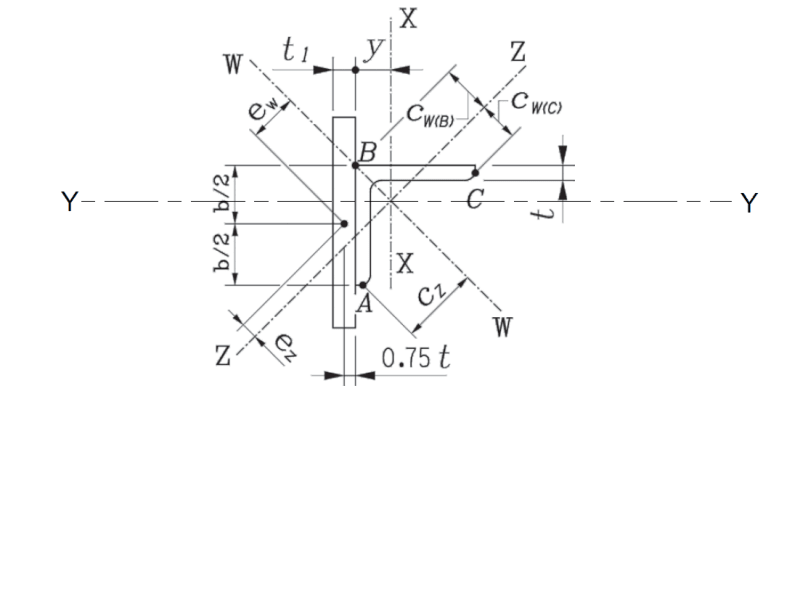Hi there,
Currently I am trying to determine the strength of a single angle subjected to axial compressive load. Due to connection eccentricities moment will be generated.
Now as per F10, AISC 360 if there is no continuous lateral resistant along the length of the member, then we are allowed to determine the capacity of the section based on bending across its principal axis.
Now solution to determine the strength along principal axis is quite straight forward. However, I am facing a challenge to determine the demand on the section. The problem I am facing over here is to determine the eccentricity with respect to the principal axis of the single angle (ew and ez). Can somebody advise me on how should I determine the eccentricity with respect to the principal axis of a single angle?
For your reference I have attach an image from the technical document "Axial Capacities of Eccentrically Loaded Equal-Leg Single Angles: Comparisons of Various Design Methods"

Currently I am trying to determine the strength of a single angle subjected to axial compressive load. Due to connection eccentricities moment will be generated.
Now as per F10, AISC 360 if there is no continuous lateral resistant along the length of the member, then we are allowed to determine the capacity of the section based on bending across its principal axis.
Now solution to determine the strength along principal axis is quite straight forward. However, I am facing a challenge to determine the demand on the section. The problem I am facing over here is to determine the eccentricity with respect to the principal axis of the single angle (ew and ez). Can somebody advise me on how should I determine the eccentricity with respect to the principal axis of a single angle?
For your reference I have attach an image from the technical document "Axial Capacities of Eccentrically Loaded Equal-Leg Single Angles: Comparisons of Various Design Methods"

